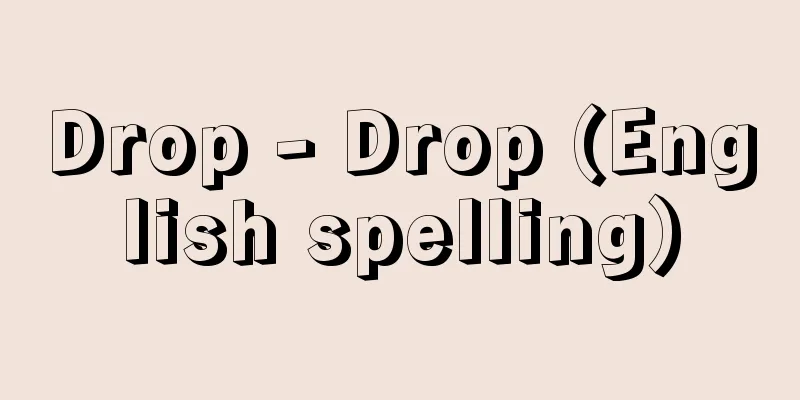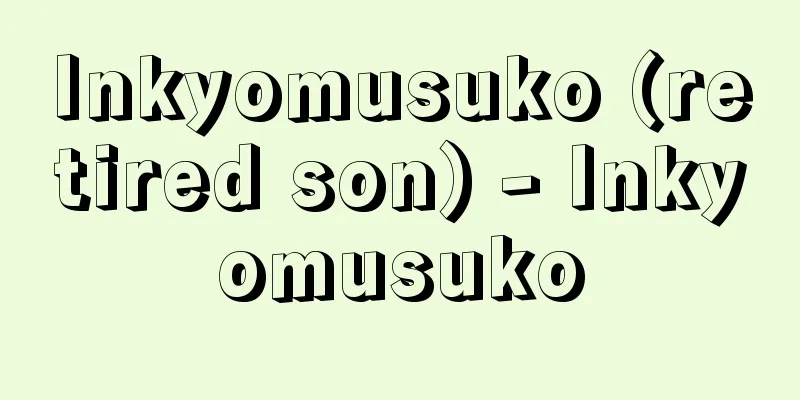Drop - Drop (English spelling)

|
A type of hard candy made primarily from sugar. Commonly known as candy balls, lozenges are hard and brittle, and break into small pieces when bitten into. In England, lozenges were originally made by cutting candied plums into small balls and coating them with sugar, but later they came to be made only from sugar. They were introduced to Japan during the Horeki era (1751-1764), and are said to have first been sold by a drug dealer in Edo under the name "Zuboutou." In the Meiji era, domestic production of the drops gradually began, and from around 1899 (Meiji 32) onwards, they were actively produced by various confectionery companies, and they became popular among the general public. The manufacturing process involves dissolving sugar in a small amount of water, adding starch syrup, and boiling the mixture. Coloring agents, flavorings, tartaric acid, citric acid, etc. are added to the boiled candy, mixed, cooled, and then molded into a specific mold. If drops are made with sugar alone, sugar crystals form, making the product opaque and making it difficult to store. Starch syrup is added to prevent sugar crystals from forming and to give the product a smooth texture. The most common type of drop is the fruit drop, which is colored and flavored with fruit. Other flavors include brown sugar, peppermint, butter, milk, chocolate, and herb flavors. [Tomomi Kono and Yonago Yamaguchi] Source: Shogakukan Encyclopedia Nipponica About Encyclopedia Nipponica Information | Legend |
|
砂糖を主原料としたハードキャンディーの一種。一般に飴玉(あめだま)ともいう。ドロップは、固くてもろく、歯でかむと細かく割れるのが特徴である。イギリスでは、初め、砂糖煮にしたプラムを小さい球状にして砂糖をまぶしたものをドロップといっていたが、のちに砂糖だけでつくるようになった。 日本へ伝わったのは宝暦(ほうれき)年間(1751~1764)で、江戸の薬種商が「ズボウトウ」の名で売り出したのが最初といわれている。明治時代になり、しだいに国内でのドロップの製造も行われるようになってきたが、とくに1899年(明治32)ごろからは各製菓会社で盛んにつくられるようになり、一般に普及していった。 製法は、砂糖を少量の水で溶かし、さらに水飴を加えて煮つめる。この煮つめた飴に、着色料、香料、酒石酸(しゅせきさん)、クエン酸などを加えて混合、冷却し、一定の型に入れて成形する。 ドロップは砂糖だけでつくると、砂糖の結晶ができて製品が不透明となり、また貯蔵がききにくい。水飴を加えるのは、砂糖の結晶が出るのを防ぐとともに、製品に口あたりの滑らかさを与えるためである。ドロップでもっとも一般的なのは、果物の色や香りをつけたフルーツドロップである。このほか、黒砂糖、ハッカ、バター、ミルク、チョコレート、ハーブの味のものなどがある。 [河野友美・山口米子] 出典 小学館 日本大百科全書(ニッポニカ)日本大百科全書(ニッポニカ)について 情報 | 凡例 |
<<: Dropout - Dropout (English spelling)
Recommend
goshenite
…The name heliodor is now generally used for ston...
Nareai Sosho - Nareai Sosho
A lawsuit filed by a plaintiff and defendant in co...
Letter of presentation - Hirojo
〘noun〙① A letter to be presented. ※Kyōka・Kyōka Nor...
Tubular central pillar - tubular central pillar
…In some plant groups, the vascular bundles are s...
Vittone, Bernardo Antonio
Born: 1705. Turin Died October 19, 1770. Turin. It...
Dutch Sekichi - Dutch Sekichi
...The current horticultural species, D. caryophy...
Ichikawa Danjuro (7th generation)
Born: 1791 (Kansei 3) [Died] 1859 (6th year of the...
Alboino
...The Lombards, who had been migrating to the lo...
Loōdi Dynasty - Loōdi Dynasty (English spelling)
The fifth dynasty of the Delhi Sultanate in northe...
man eating shark
…In English, a shark attack is called a shark att...
Ulmus minor (English spelling) Ulmus minor
… [Toshio Hamatani]. … *Some of the terminology t...
Photo flood lamp
A light bulb used for studio lighting and enlarger...
Conveyor scale - Conveyor scale (English name)
Also known as a conveyor scale. A type of automati...
Kindai - Kindai
...As it ages, the area around its mouth turns wh...
Edo Shogunate
This refers to the governing body of the Tokugawa...









